Uganda receives more planes
It is 74 years since the East African Airways was founded on October 30th, 1945 by the four territories of Kenya, Tanzania, Uganda and Zanzibar.
UGANDA AIRLINES
KAMPALA - The Uganda Airlines has today received the second batch of the planes after getting the first ones months back.
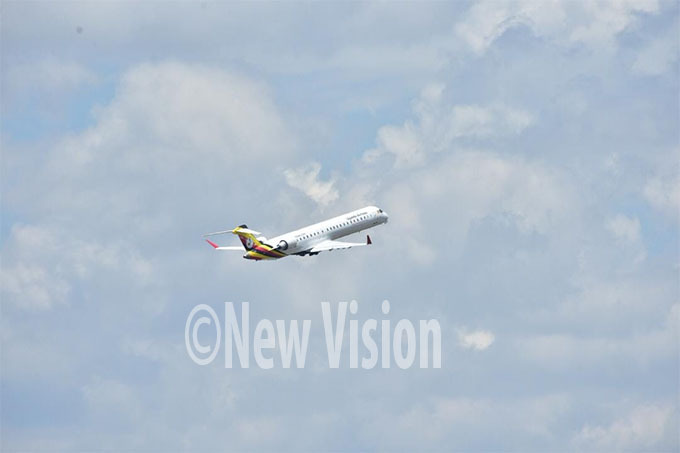
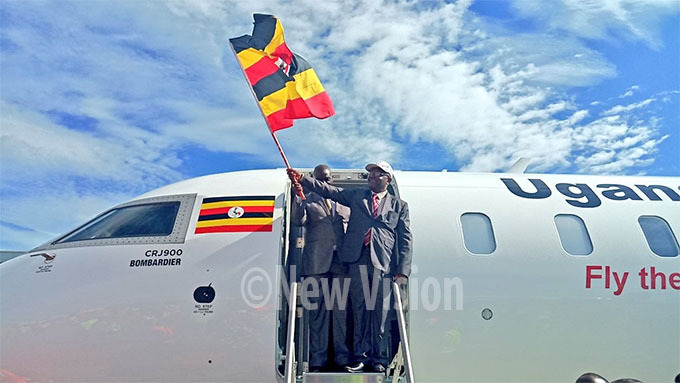
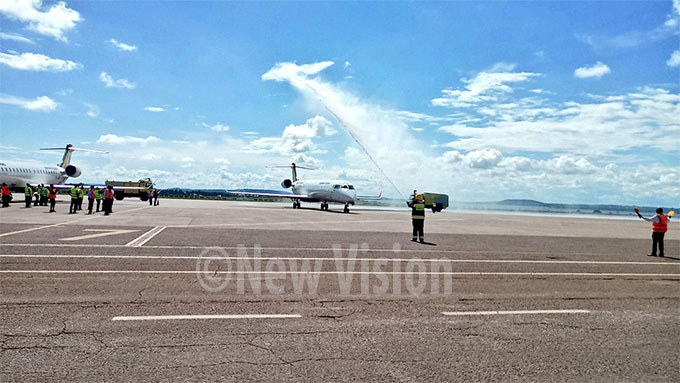
But what is the history of aviation in Uganda?
It is 74 years since the East African Airways was founded on October 30th, 1945 by the four territories of Kenya, Tanzania, Uganda and Zanzibar with an initial capital of 50,000 pounds, which was quite a hefty sum those days.

The visionary colonial governors of the day knew that although the airline wouldn't immediately become a commercial success, it was nevertheless a strategic necessity, and it kicked off with a few light aircrafts.
Seven years later, the reginal carrier flew its symbolically most important passenger, Queen Elizabeth the second. As a young princess, she was vacationing in Kenya in 1952 when the King of England died.
East African Airways was on hand to fly her from Nanyuki to Entebbe from where she connected to London to claim her throne. EAA thus became the first non-British carrier to fly a English monarch.
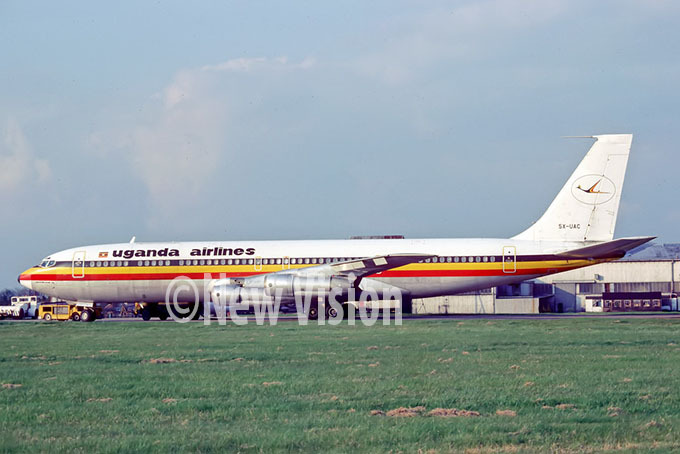
By Independence in the early sixties, East African Airways had become a strong carrier, flying to many destinations in the region and the rest of the world.
Through the sixties and seventies, air stewardesses or hostesses were the trendiest ladies in the region and many girls aspired to become one more than any other professions.
Still making symbolic history, on July 20th, 1969 East African Airways became the first airline to fly the Holy Father to Africa on the first pontifical trip to the continent.
Pope Paul flew from Rome on a brand-new Super VC 10 and on entering Uganda airspace, was received by four Uganda Airforce fighter jets that escorted the plane.
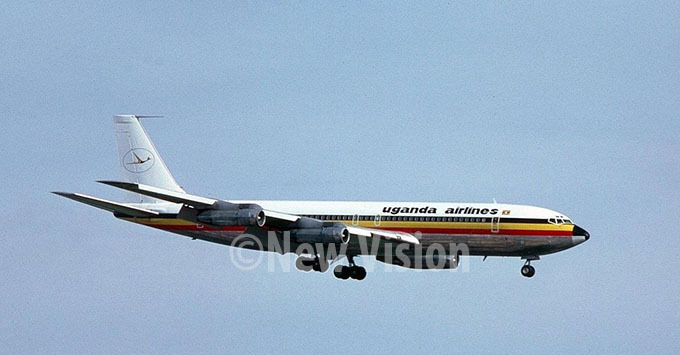
In the 1970s at the height of the cold war, ideological differences between Kenya and Tanzania precipitated the death of the East African Community in 1977, although Uganda's Idi Amin had always been a convenient scapegoat for the community's demise. The East African Airways became a victim of the demise like many other East African joint ventures.
President Amin had strategically created Uganda Airlines in 1976 and it was at hand to become the national carrier at the death of East African Airways. The Flying Crane was thus born, and its call signal was QU
In the two years 1977 and 1978 Uganda Airlines was quite busy. It flew to many international destinations in Europe, Asia and the Middle East. Because Amin had no time to beg hostile neighbours, he often bypassed Mombasa port and flew out Uganda's export cargo.
The port of Djibouti thus became important to Uganda as an outlet for coffee.
In 1978, Uganda sent the largest number of pilgrimmes for the Hijja to Mecca. Uganda Airlines was making two flight to Saudia per day for a fortnight.
After the fall of Amin in 1979, the aviation sector started sliding downwards as decision became politicized as Entebbe Airport was renamed Milton Obote Airport.
Vice President Paulo Muwanga took over catering services at the airport. In the early eighties, inflight meals on QU lost an international character and many non-Ugandan passengers got stomach problems eating badly cooked Ugandan staples.
When the military commission overthrew Obote in 1985, Uganda Airlines management took on an anarchist character.
One time a minister who took his time to leave Kampala arrived at Entebbe when a flight to Nairobi had taken off. He directed the plane to be recalled and it was.
After the NRM took power in 1986, many thing improved but not Uganda Airlines.
Its fleet dwindled and strict international standards disqualified its few remaining planes due to their excess noise.
Government spent huge sums to ‘hushkit' the planes. In 1989, of its two Boeings that could fly intercontinental trips crashed at Rome's Fumicino Airport, killing many people.
The Italian investigators produced a report which took long to reach Uganda's parliament. Transport Minister Ruhakana Rugunda was being pestered by MPs for the report and he said it was too huge and the government was still studying it. Eventually, Rugunda tabled the report.
Two main causes of the crash were the condition of the aircraft whose altimeter malfunctioned and it hit the ground when the pilot believed it was still in the air.
Secondly, pilot error was blamed as the pilots insisted on landing at Fummicino airport yet Air Traffic Control told them the misty was too much and they should land at Leornado da Vinci, Rome's second airport.
The report concluded that the pilots must have had other commercial and not technical reasons for landing at an airport that was unsafe due to mist because the malfunctioning of the altimeter would have been mitigated by using their eyes if visibility had been okay. So they crashed blindly.
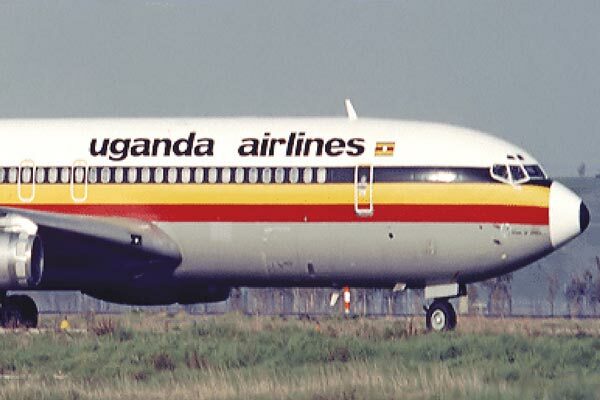
As if the Rome crash was not bad enough, Uganda Airlines' remaining large aircraft was to be captured a year later in the Yugoslavian war zone where it was smuggling weapons.
The dubious weapons smuggling racket has never been fully explained. And it is not known for how long the smuggling of weapons from Southern Africa to Eastern Europe had been going on.
While Uganda's patriotic NRM was busy helping train ANC soldiers at Kaweweta, some anti - Pan African elements were busy helping the apartheid regime make profits selling weapons to Eastern Europe.
The Ugandan civilian crew were held a long period as prisoners of war.
Again poor Rugunda was expected to explained the mischief in Uganda Airlines. At a press conference, journalists who turned up were disappointed as to all their questions, Ndugu Rugunda just answered, "Government operated in mysterious ways."
In the mid-nineties at the height of privatization, Uganda Airlines was also due to privatization. By then with virtually no aircraft left, its main asset was the ground handling business at Entebbe and its routes.
But the ground handling bit was chopped off and it became Entebbe Handling Services or Enhas. Some lucrative routes were assigned to foreign carriers.
There was nothing worthy left to privatize. British Airways, Swiss Air, South African Airways and even Kenya Airways lost interest. There was no interested buyer. The flying crane was thus grounded.
With cabinet's recent decision to revive Uganda Airlines, Ugandans can only hope that the dubious deals that helped kill the airlines will not return to stop the crane from flying again.